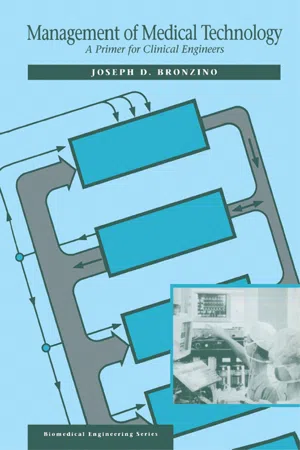EVOLUTION OF THE MODERN HEALTH-CARE SYSTEM
Before 1900, medicine had little to offer the average citizen because its resources consisted mainly of the physician, his education, and his little black bag. In general, physicians seemed to be in short supply, but the shortage then had rather different causes than found today. Although the costs of obtaining medical training were relatively low, the demand for doctors’ services was also very small because many of the services provided by the physician could also be obtained from experienced amateurs in the community. The home was typically the site for diagnosis, treatment, and recuperation, and relatives and neighbors constituted an able and willing nursing staff. Babies were delivered by midwives, and those illnesses not cured by home remedies were left to run their natural, albeit frequently morbid, course. The contrast with contemporary health-care practices, in which specialized physicians and nurses located within the hospital provide critical diagnostic and treatment services, is dramatic.
The changes that have occurred within medical science originated in the rapid developments that took place in the applied sciences (chemistry, physics, engineering, microbiology, physiology, pharmacology, etc.) at the turn of the century. This process of development was characterized by intense interdisciplinary cross-fertilization, which provided an environment in which medical research was able to take giant strides in developing techniques for the diagnosis and treatment of disease. For example, in 1903, Willem Einthoven, the Dutch physiologist, devised the first electrocardiograph to measure the electrical activity of the heart. In applying discoveries in the physical sciences to the analysis of a biological process, he initiated a new age in both cardiovascular medicine and bioelectrical measurement techniques.
New discoveries in medical technology followed one another like intermediates in a chain reaction. However, the most significant innovation for clinical medicine was the development of X-rays. These “new kinds of rays,― as their discoverer W.K. Roentgen described them in 1895, opened the “inner man― to medical inspection. Initially, X-rays were used to diagnose bone fractures and dislocations. In the process, this “modern technology― became commonplace in most urban hospitals. Separate departments of radiology were established, and their influence spread to other departments throughout the hospital. By the 1930s, X-ray visualization of practically all organ systems had been made possible because of the inherent radiopacity of the body and the use of barium salts and a wide variety of radio-opaque materials.
X-ray technology gave physicians a powerful tool that, for the first time, permitted accurate diagnosis of a wide variety of diseases and injuries. Moreover, since X-ray machines were too cumbersome and expensive for local doctors’ clinics, they had to be placed in hospitals. Once there, X-ray technology essentially triggered the transformation of the hospital from a passive receptacle for the sick poor to an active curative institution for all members of society.
For economic reasons, the centralization of health-care services became essential because of many other important technological innovations appearing on the medical scene. However, hospitals remained institutions to dread, and it was not until the introduction of sulfanilamide in the mid-1930s and penicillin in the early 1940s that the main danger of hospitalization, i.e., cross-infection among patients, was significantly reduced. With these new drugs in their arsenals, surgeons were permitted to perform their operations with reduced morbidity and mortality due to infection. Furthermore, even though the different blood groups and their incompatibility were discovered in 1900 and sodium citrate was used in 1913 to prevent clotting, full development of blood banks was not practical until the 1930s when technology provided adequate refrigeration. Until that time, “fresh― donors were bled, and the blood was transfused while it was still warm.
Once these surgical units were established, employment of the available medical technology assisted in further advancing the development of complex surgical procedures. For example, the Drinker respirator was introduced in 1927, and the first heart-lung bypass was accomplished in 1939. By the late 1940s, medical procedures heavily dependent upon medical technology, such as cardiac catheterization and angiography (the use of a cannula threaded through an arm vein and into the heart with the injection of radio-opaque dye for the X-ray visualization of heart vessels and valves), were developed. As a result, accurate diagnoses of congenital and acquired heart disease became possible, and a new era of cardiac and vascular surgery was established.
Following World War II, the development of medical devices accelerated rapidly and the medical profession benefitted greatly from this rapid surge of technological finds throughout the next four decades.
S...
